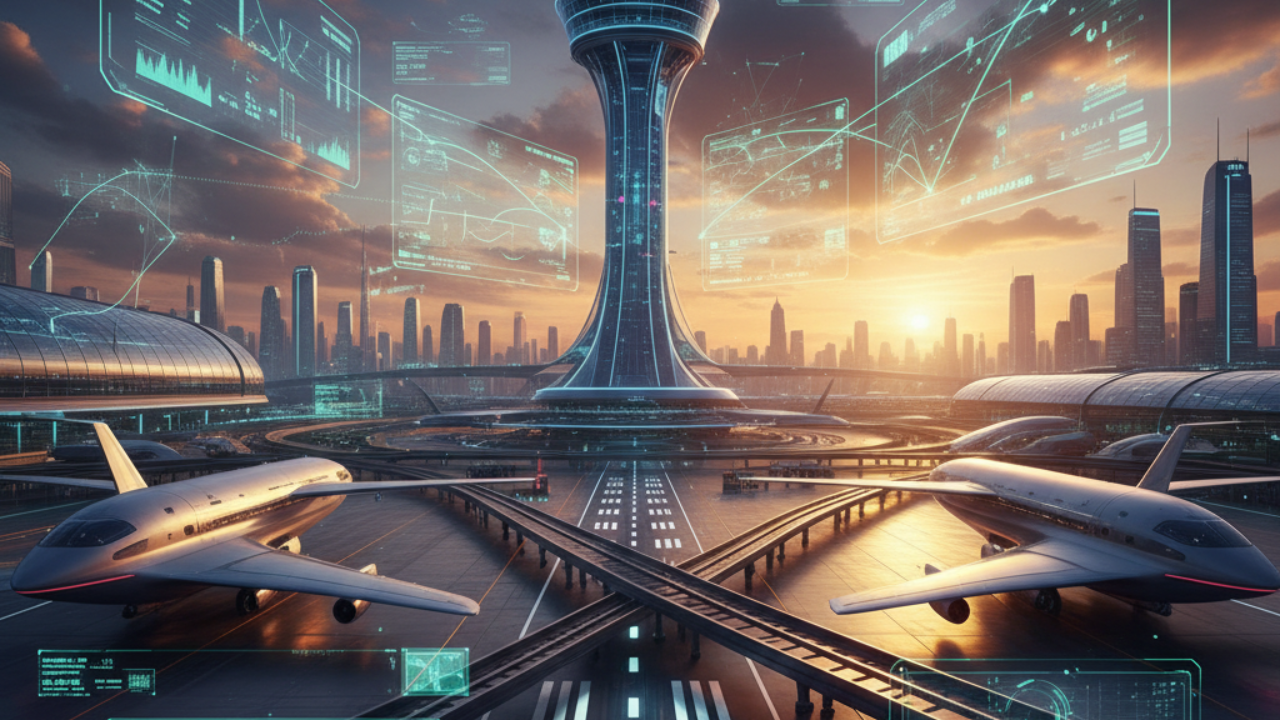
Post by : Shivani
The skies are becoming increasingly busy. With thousands of commercial, cargo, and private flights navigating global airspace daily, maintaining safety, efficiency, and reliability is more complex than ever. Artificial intelligence (AI), machine learning (ML), and predictive analytics are rapidly transforming the way air traffic control (ATC) operates, turning concepts once thought to be science fiction into operational realities.
Air traffic control has always relied on human expertise, radar systems, and manual coordination to ensure safe flight operations. Initially, controllers depended on voice communication and visual monitoring. Over decades, digital technologies improved monitoring and coordination, reducing errors and increasing efficiency.
In the late 20th century, basic automated tools were introduced to assist controllers in tracking aircraft positions, calculating separation distances, and predicting potential conflicts. These tools provided support but still required extensive human intervention.
Today, AI is integrated into air traffic management to enhance predictive capabilities, reduce human error, and handle increasingly complex traffic scenarios. Intelligent algorithms analyze vast amounts of flight data in real-time, optimize routing, and improve decision-making for controllers.
Modern AI systems process millions of flight data points per second. Machine learning models detect patterns in aircraft movement, weather conditions, and traffic density, allowing predictive algorithms to anticipate congestion or delays before they happen.
Safety is paramount in aviation. AI-driven predictive models can forecast potential conflicts, runway incursions, and adverse weather impacts. By proactively identifying risks, controllers can implement preventive measures and reduce the likelihood of accidents.
AI provides decision support for controllers by recommending optimal flight paths, adjusting sequencing for arrivals and departures, and flagging potential hazards. This reduces cognitive load and allows controllers to focus on higher-level strategic decisions.
Conflict detection algorithms continuously monitor aircraft trajectories and predict possible collisions or proximity issues. By integrating AI, these systems can generate early alerts and propose corrective actions faster than traditional methods.
AI simulations allow controllers to prepare for emergency scenarios. Predictive models assess multiple risk factors, simulate outcomes, and recommend optimal responses, improving response times and operational resilience.
Despite rigorous training, human error remains a leading cause of aviation incidents. AI minimizes error potential by providing real-time recommendations, automated monitoring, and cross-checking of human decisions.
As AI systems become central to ATC, cybersecurity becomes critical. Threat vectors include algorithm manipulation, data breaches, hacking of predictive models, and unauthorized access to air traffic networks.
Air traffic authorities are developing redundant AI systems, backup networks, and emergency protocols to ensure uninterrupted operations even during cyber incidents.
Before deployment, AI systems must comply with international aviation standards. Validation involves rigorous testing of algorithms, scenario simulations, and operational safety checks.
Even with advanced AI, human oversight is crucial. Controllers supervise AI recommendations, ensuring accountability, transparency, and safety. Regulatory frameworks emphasize that AI should augment—not replace—human decision-making.
Certifying AI for ATC requires proving consistent performance under diverse conditions. Regulatory bodies such as ICAO and FAA mandate extensive trials, simulations, and operational evaluations.
Modern airspace is congested with commercial, cargo, and private aircraft. AI-driven route optimization reduces delays and fuel consumption by analyzing live traffic, weather, and airspace constraints. Machine learning algorithms calculate the most efficient flight paths, taking into account aircraft performance, airspace restrictions, and dynamic weather conditions.
AI can automate sequencing at busy airports, ensuring safe spacing between arrivals and departures. Predictive models simulate scenarios, optimize runway usage, and reduce holding patterns, saving fuel and minimizing environmental impact.
AI continuously monitors airspace to detect potential congestion points. By rerouting aircraft dynamically, it prevents bottlenecks, reduces delays, and improves the overall flow of air traffic.
Urban Air Mobility (UAM) refers to aerial vehicles operating in urban environments, including passenger drones, delivery drones, and autonomous aerial taxis. With airspace becoming increasingly crowded, AI is essential to safely integrate UAM into existing air traffic systems.
AI systems manage complex low-altitude airspace, coordinating hundreds of drones simultaneously. Algorithms ensure collision avoidance, dynamic route planning, and prioritization of emergency or high-priority flights.
UAM introduces unique regulatory challenges. Authorities require strict safety protocols, geo-fencing, automated conflict resolution, and real-time monitoring. AI helps enforce these regulations and ensures compliance across large urban areas.
The ultimate vision for AI in ATC is fully autonomous traffic management. AI systems will monitor global airspace, dynamically manage traffic, and make predictive decisions without continuous human input. Human controllers will oversee and intervene only during exceptions.
Despite the potential, fully autonomous ATC faces hurdles. Certification, regulatory acceptance, public trust, cybersecurity, and interoperability with current systems are key concerns. Hybrid systems combining AI and human supervision are likely to dominate initial adoption phases.
The Federal Aviation Administration’s NextGen program integrates AI and predictive analytics to modernize US airspace. Benefits include reduced fuel consumption, fewer delays, and improved safety through real-time traffic monitoring and route optimization.
Single European Sky ATM Research (SESAR) leverages AI for collaborative traffic management, drone integration, and predictive safety modeling. SESAR trials demonstrate reduced delays, increased capacity, and better airspace utilization.
Airports are using AI to manage gate assignments, runway scheduling, and ground operations. Predictive models forecast aircraft arrival times, optimize taxiing routes, and minimize turnaround delays, enhancing overall efficiency.
AI-driven simulators provide realistic training for air traffic controllers. By simulating high-traffic and emergency scenarios, controllers gain experience in complex decision-making while interacting with AI-assisted systems.
Simulations enable risk-free testing of new AI algorithms, airspace designs, and emergency protocols. This ensures that AI systems are safe, reliable, and fully validated before operational deployment.
AI uses advanced predictive models to forecast potential aircraft collisions. Machine learning analyzes flight trajectories, weather data, and airspace congestion to recommend corrective actions in real time, enhancing situational awareness for controllers.
Weather-related incidents are a major factor in aviation delays and safety risks. AI integrates meteorological data to predict turbulence, wind shear, thunderstorms, and icing conditions. By modeling these factors, controllers can adjust flight paths proactively.
AI predicts potential mechanical or technical failures by analyzing aircraft performance data. Predictive maintenance reduces unscheduled downtime, prevents accidents, and improves operational reliability.
AI serves as a co-pilot for controllers, offering recommendations and highlighting risks without taking full control. This ensures human accountability while leveraging the speed and precision of AI.
AI models are increasingly designed for explainability. Controllers can understand the rationale behind AI recommendations, ensuring trust and compliance with safety standards.
Simulated environments allow controllers to practice working alongside AI. This collaborative approach enhances confidence, efficiency, and error management in real-world operations.
Ethical frameworks require that AI decisions in aviation remain accountable. Human controllers retain ultimate responsibility for airspace safety, even when AI provides automated guidance.
AI must operate without bias toward certain aircraft types, airlines, or regions. Continuous auditing of algorithms ensures fair, equitable, and safe decision-making.
International aviation authorities mandate strict governance of AI systems, including testing, monitoring, and reporting. Ethical considerations are integral to certification and operational approval.
Optimized flight paths and AI-assisted sequencing reduce unnecessary holding patterns and detours, lowering fuel usage and operational costs.
Efficient routing and predictive management reduce carbon emissions, contributing to sustainable aviation goals and compliance with international environmental standards.
AI can route aircraft to minimize noise impact over populated areas, improving urban living conditions and community acceptance of air traffic.
The next decade may see AI managing air traffic on a global scale, coordinating flights across continents, and ensuring real-time optimization for safety, efficiency, and environmental performance.
AI will work alongside Internet of Things (IoT) devices, advanced sensors, and blockchain-enabled data security to create a fully connected, autonomous, and resilient air traffic ecosystem.
Future AI systems will learn continuously from real-world operations, adapting to new patterns, anomalies, and emerging challenges, ensuring ever-improving performance and safety.
Artificial intelligence is no longer a futuristic concept in aviation—it is actively reshaping air traffic control. From predictive safety and optimized routing to urban air mobility and autonomous management, AI enhances safety, efficiency, and environmental sustainability. Human controllers remain at the core of decision-making, augmented by AI systems that provide real-time insights, reduce errors, and improve operational resilience.
The future of aviation will see global airspace coordinated by intelligent systems, with drones, flying taxis, and traditional aircraft coexisting safely. By embracing AI responsibly, regulators, airlines, and controllers can create a safer, more efficient, and environmentally friendly aviation ecosystem.
#AIAirTrafficControl #AviationAI #MachineLearningAviation #PredictiveAnalyticsATC
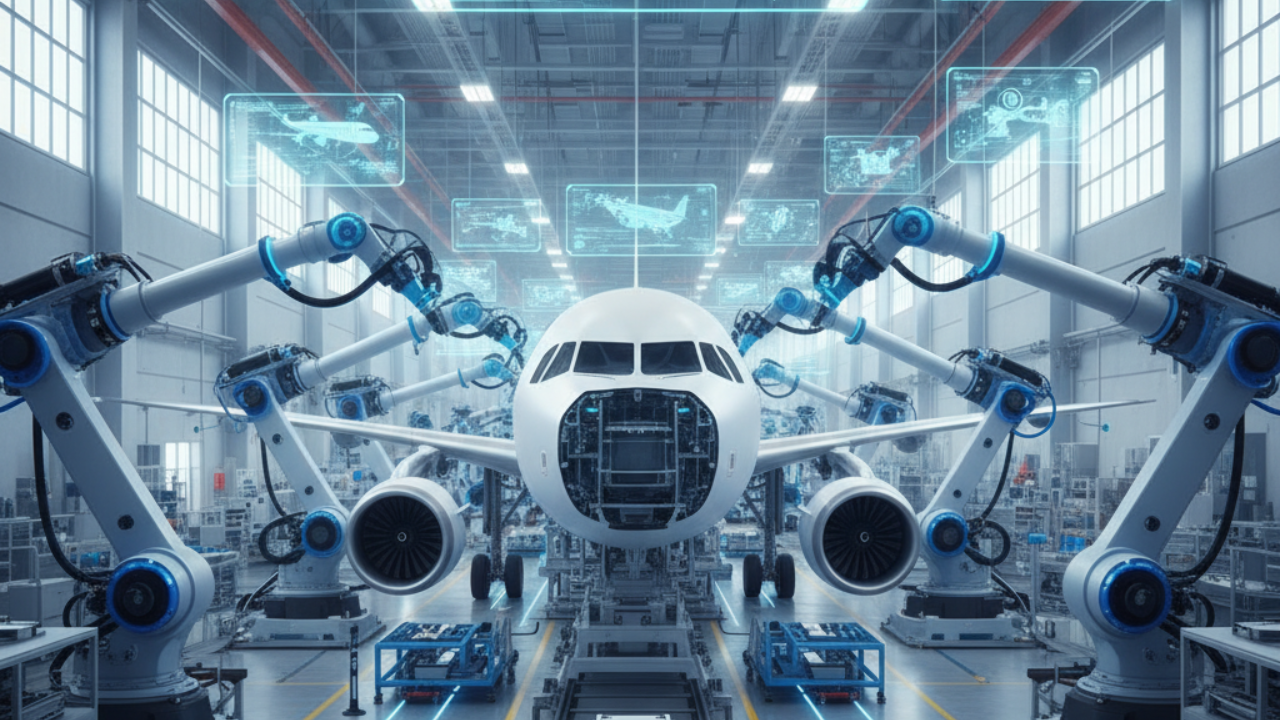
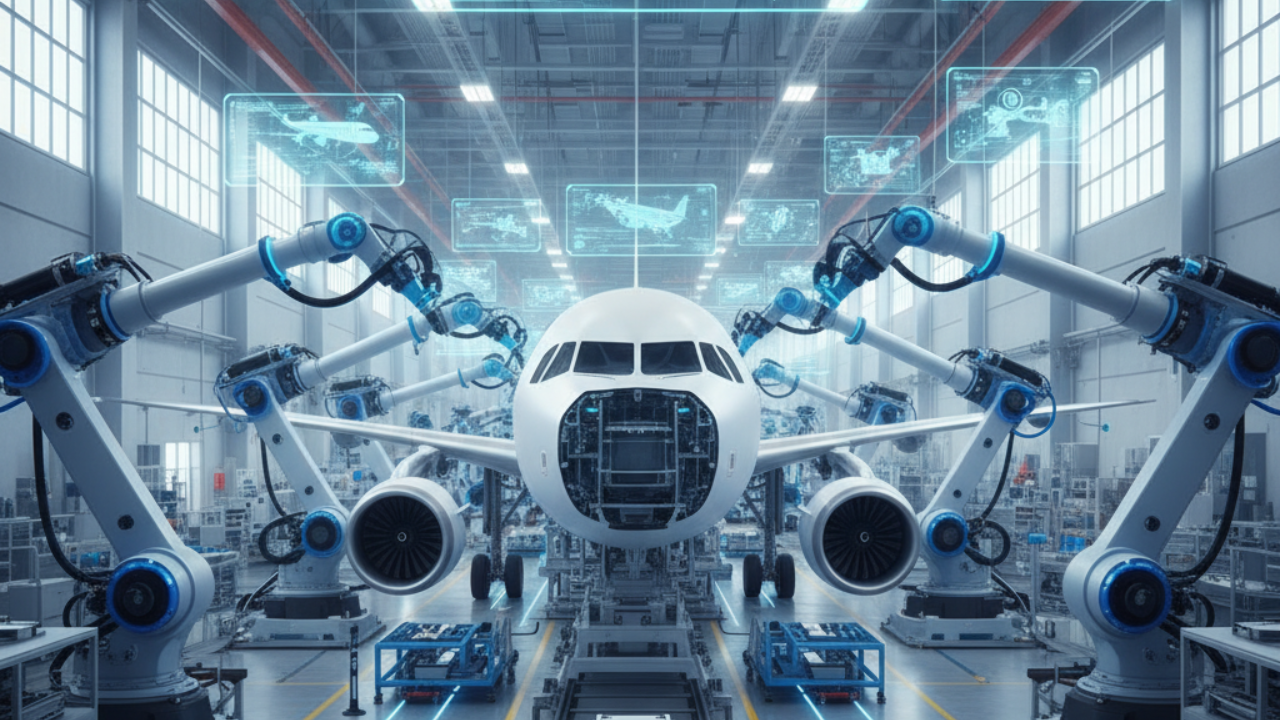
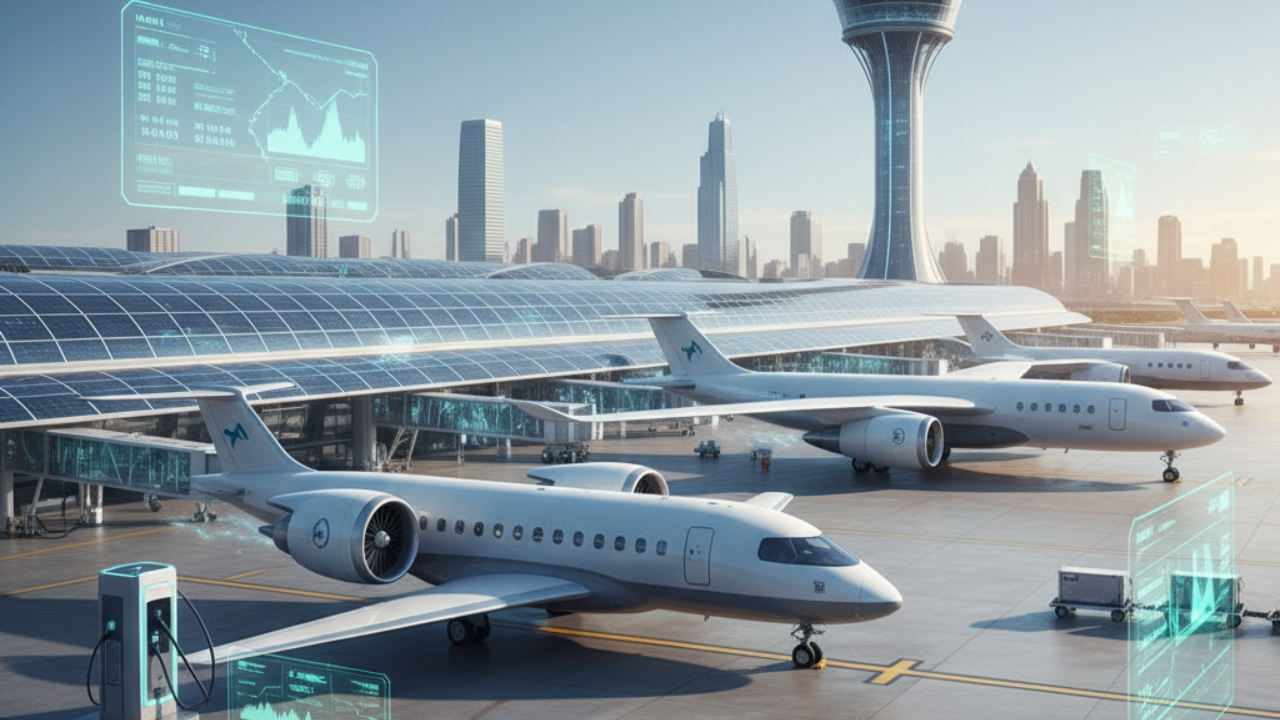
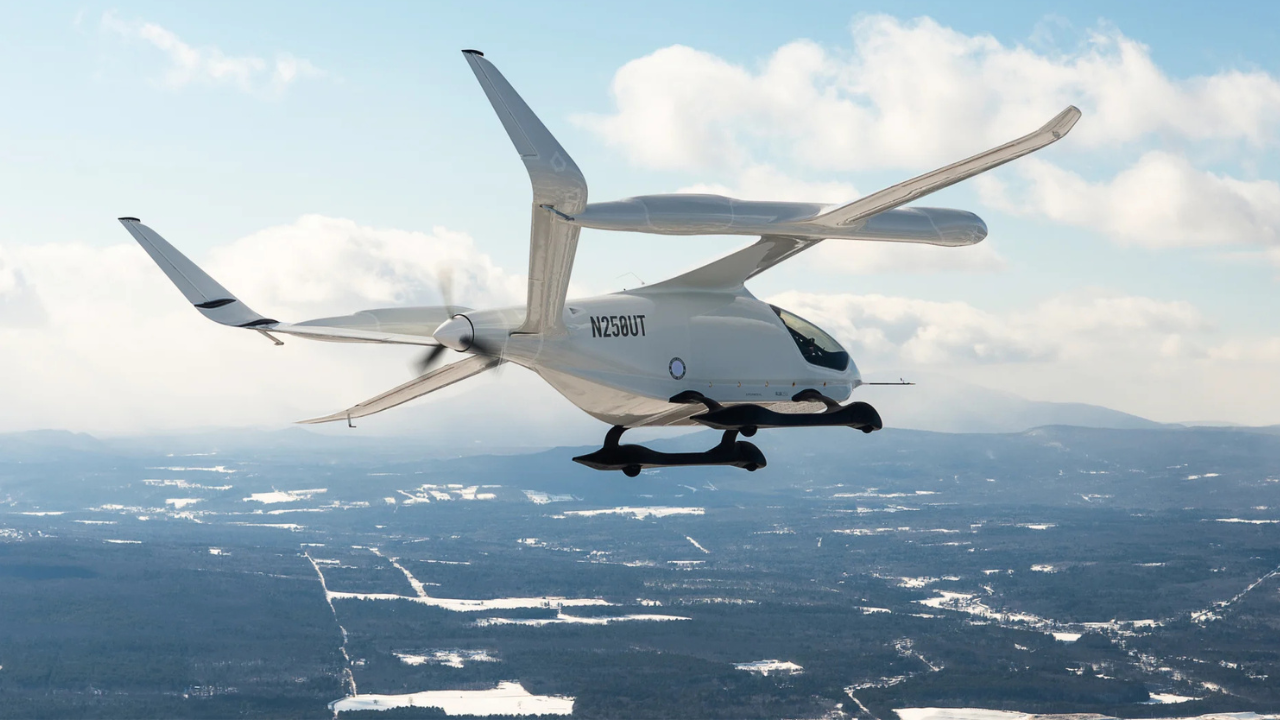






Bengaluru-Mumbai Superfast Train Approved After 30-Year Wait
Railways approves new superfast train connecting Bengaluru and Mumbai, ending a 30-year demand, easi

Canada Post Workers Strike Halts Nationwide Mail and Parcel Services
Canada Post halts operations as CUPW strike disrupts mail and parcel delivery nationwide amid disput

PM Modi Launches BSNL ‘Swadeshi’ 4G Network, 97,500 Towers Built
India enters global telecom league as PM Modi inaugurates BSNL’s indigenous 4G, connecting 26,700 vi

India’s Iconic MiG‑21 Takes Final Flight After Six Decades of Service
After 60 years India retires its MiG‑21 fighter jet, a legendary yet controversial warplane marking

Hindustan Zinc unveils AI hotspot monitoring at Debari smelter
Hindustan Zinc launches AI-powered Switchyard Hotspot Monitoring at Debari smelter to cut outages bo

Chinese experts worked inside sanctioned Russian drone plant
Chinese drone specialists visited IEMZ Kupol supplying parts and drones via intermediaries, deepenin